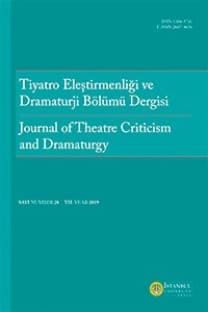Ethical and Political Implications of “Performance” in a Rural Cultural Practice: Afro-Colombian Women Singers from the Town of Pogue
This article analyzes a group of Afro-Colombian female singers from Pogue, a rural area of the Colombian Pacific who have reinvented traditional mourning songs (alabaos). Their music and performance refer to the massacres and abuses committed by both the FARC leftist guerrilla group and the right-wing paramilitary in the nearby village of Bojayá. We will not study these traditional mourning songs from an ethnographic perspective, but from the interdisciplinary perspective of performance studies. As such, the aim here is to emphasize the wider political and artistic dimension of the songs vis-à-vis Colombian necropolitics. However, we will still rely on the work of social scientists as we recognize the importance of grounding our analysis on a specific reality. In addition, we find a foothold on Rustom Bharucha’s perspective on the performativity of “terror’ in the Global South, as we think this Indian cultural critic is spot-on when questioning the “war on terror” master narrative resulting from the attacks on September 11, 2001, and looking instead at other areas of the world where “terror” assumes a concrete and visceral dimension in everyday life.
Anahtar Kelimeler:
Cultural Performance, Theater and Performance, Colombian Peace Process, Necropolitics, The Pogue Singers
Ethical and Political Implications of “Performance” in a Rural Cultural Practice: Afro-Colombian Women Singers from the Town of Pogue
This article analyzes a group of Afro-Colombian female singers from Pogue, a rural area of the Colombian Pacific who have reinvented traditional mourning songs (alabaos). Their music and performance refer to the massacres and abuses committed by both the FARC leftist guerrilla group and the right-wing paramilitary in the nearby village of Bojayá. We will not study these traditional mourning songs from an ethnographic perspective, but from the interdisciplinary perspective of performance studies. As such, the aim here is to emphasize the wider political and artistic dimension of the songs vis-à-vis Colombian necropolitics. However, we will still rely on the work of social scientists as we recognize the importance of grounding our analysis on a specific reality. In addition, we find a foothold on Rustom Bharucha’s perspective on the performativity of “terror’ in the Global South, as we think this Indian cultural critic is spot-on when questioning the “war on terror” master narrative resulting from the attacks on September 11, 2001, and looking instead at other areas of the world where “terror” assumes a concrete and visceral dimension in everyday life.
Keywords:
Cultural Performance, Theater and Performance, Necropolitics, Colombian Peace Process, The Pogue Singers,
___
- Agamben, Giorgio. Homo Sacer: El poder soberano y la nuda vida. Valencia: Pre-textos, 1998. google scholar
- Arango-Melo, Ana. Velo que bonito: Prâcticas y saberes sonoro-corporales de la primera infancia en la poblaciön afro-chocoana. Bogota D.C.: Opciones Graficas Editores, 2014. google scholar
- Bharucha, Rustom. Performance and Terror. New York: Routledge, 2014. google scholar
- Botero, Jeronimo, and Aurora Vergara. “Cantando el territorio”. Paper presented at the annual meeting for the Latin American Studies Association Congress, Barcelona, May 23, 2018. google scholar
- De la Torre, Gonzalo (compilator and editor). Alabaos. Misioneros Claretianos Colombia. Quibd6: 2005. google scholar
- hooks, bell. Teaching to Transgress. New York: Routledge, 1994. google scholar
- INDEPAZ. “ Informe Especial: Asesinato de lideres sociales”. July 15, 2020. http://www.indepaz.org.co/wp-content/uploads/2020/07/Informe-Especial-Asesinato-lideres-sociales-Nov2016-Jul2020-Indepaz.pdf google scholar
- 41 INDEPAZ, «Informe Especial: Asesinato de lideres sociales», accessed July 15, 2020, http://www.indepaz.org. co/wp-content/uploads/2020/07/Informe-Especial-Asesinato-lideres-sociales-Nov2016-Jul2020-Indepaz.pdf. google scholar
- Longoni, Ana. “Perder la forma humana”. Cartografias cnticasI. Edited by Ileana Dieguez, Paola Marin, and Gaston Alzate. Los Angeles: Karpa, 2018. www.calstatela.edu/al/karpa/longoni. google scholar
- Maya, Adriana. “Africa: Legados espirituales en La Nueva Granada, siglo XVII”, Historia Cntica 12/1 (1996): 29-41. google scholar
- Mbembe, Achille. Necropolitics. Durham, NC: Duke University Press, 2019. google scholar
- Quiceno, Natalia; Ochoa Sierra, Mana and Marcela Villamizar, Adriana. “La poHtica del canto y el poder de las alabaoras de Pogue (Bojayâ, Choco)”, EstudiosPotiticos 51 (2017), 175-195. google scholar
- Rinaldi, Ray Mark. “A Peace Monument in Colombia Is Caught in a Crossfire”. New York Times, October 23, 2019. google scholar
- Sânchez, Gonzalo (coord.), et al. Bojayâ: laguerra sin timites. Historical Memory Group Report on Bojayâ. Bogota: CNRR—Grupo de Memoria Historica, Ediciones Semana, 2010. google scholar
- Schechner, Richard. Performance Studies: An Introduction. New York: Routledge, 2002. google scholar
- Stachelhaus, Heiner. Joseph Beuys. Translated by Joan Godo Costa. Barcelona: Parsifal Ediciones, 1990. google scholar
- Uno a Uno: Bojayâ—memoria atrasada. Diocese of Quibdo and PAZIPAZ, producers 019. www.youtube. com/watch?v=KmzOJ1y-S4g. google scholar
- Valencia Câizamo, Nelly. “Alabaos y chigualos-guaHes del Choco traıdos al escenario recitaHstico del cantante Hrico.” Master’s thesis, EAFIT University, Medellm, 2015. https://repository.eafit.edu.co/ bitstream/handle/10784/8048/Nelly_ValenciaCaizamo_2015.pdf?sequence=2&isAllowed=y. google scholar
- Vergara, Aurora. “Suffering While Black: Resistance amid Deracination.” In Afrodescendant Resistance to Deracination in Colombia. London: Palgrave McMillan, 2018, 69-80. google scholar
- Voces de resistencia: Cantadoras de Pogue. ICESI University, Cali, producer. 2016-2017. google scholar
- ISSN: 1303-8605
- Yayın Aralığı: Yılda 2 Sayı
- Başlangıç: 2002
- Yayıncı: İstanbul Üniversitesi
Sayıdaki Diğer Makaleler
Sevim Burak’s Protest Theatre: Understanding Sevim Burak Through Adorno
Sevgi Ayakları: “Uysal Özneler” Üzerinden Bir 12 Eylül Okuması
Dog’s Day: Natural Folly and Subversion in Much Ado About Nothing*
Aesthetics in Theatre: The Challenge of Effect Under the Skin
